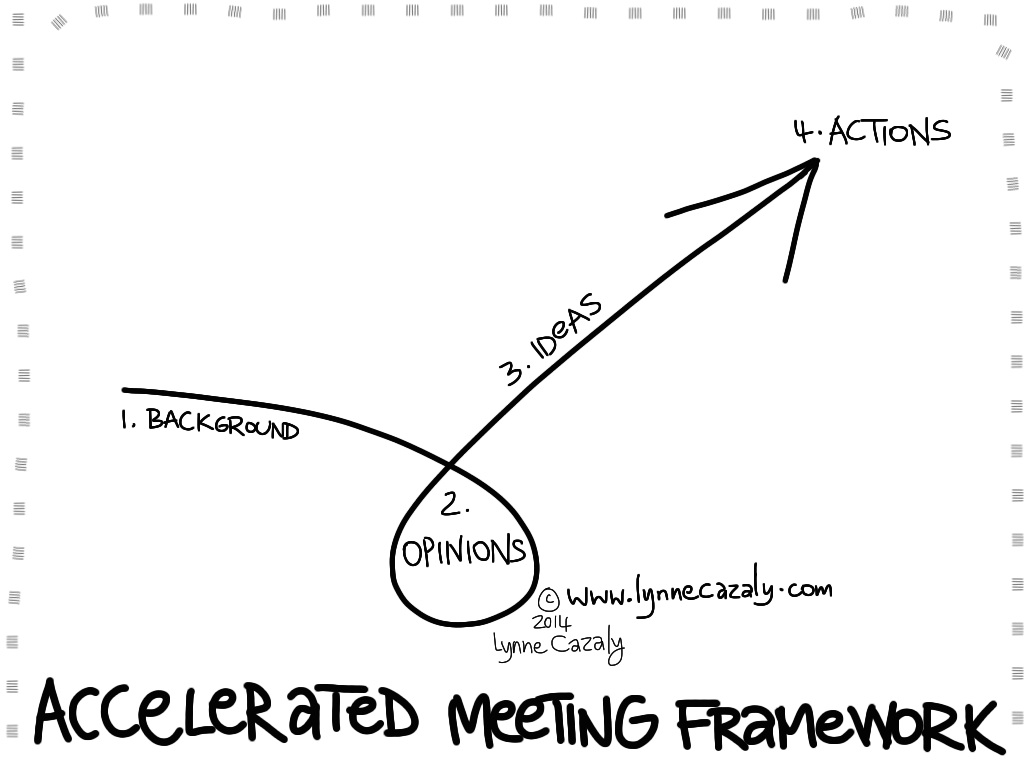The Accelerated Meeting Framework
 Tuesday, December 2, 2014 at 9:36AM
Tuesday, December 2, 2014 at 9:36AM 'Everybody in the house put your hands up'... who would prefer that meetings went on l-o-n-g-e-r than they already do?
And keep your hands up if you'd like those meetings to achieve even less than they do now?
Urgh - so many meetings are just a time, energy, mood and productivity waste that we can't even be bothered putting our hands up!
But what to do? How to keep it short, sharp, focused and driving towards outcomes?
Try my Accelerated Meeting Framework:

1. Start with the background - no interruptions, just set the scene of why we're here, what we're gonna do and the facts and data that inform where we're at now.
2. Then open it up - stand back and let the talking and opinions fly. Let people have their say, put forward their viewpoint and get it off their chest. Be sure to make visual and visible note of the key things people are contributing. Keep it to the topic, share the contribution and 'air time' around. Beware, this is where things can go around in circles - summarise what the main views are.
3. Generate ideas and opportunities, possibilities and potential. List them and visually capture them so people can see. Narrow down the ones that are quick wins, easy to implement, partially done (see my blog on Stop Starting, Start Finishing) or will bring a great return on investment.
4. List the actions that are to be followed up and implemented. Put names and dates next to those. Make it visual and visible, so people can see what you've worked through and where you've got to.
Done.
The success of meetings, workshops and strategy sessions is judged on what is done, what is achieved and what progress is made.
You're responsible for leading a team to great progress.
Use visuals with your meeting and you'll reduce meeting time by 25%.
Use my Accelerated Meeting Framework and you'll get through more, quicker.


















